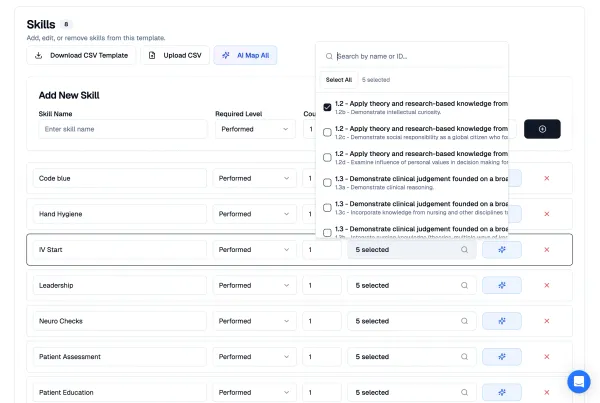5 Evidence-Based Strategies to Reduce Nursing Burnout

Nursing burnout is a significant challenge facing the healthcare industry, affecting not only the nurses themselves but also patient outcomes, staff retention rates, and the overall quality of care. Burnout is defined as a state of physical, emotional, and mental exhaustion caused by excessive and prolonged stress. It is characterized by feelings of cynicism, depersonalization, and reduced personal accomplishment. Studies show that up to 70% of nurses experience burnout during their careers, highlighting the urgent need for effective strategies to reduce its prevalence and impact (Shanafelt et al., 2015).
In this article, we will explore evidence-based strategies that can help nurses reduce burnout and improve job satisfaction.
1. Prioritize Self-Care
Self-care is an essential strategy for reducing burnout and improving overall wellbeing. Nurses can prioritize self-care by maintaining a healthy lifestyle, getting enough sleep, exercising regularly, and practicing mindfulness and meditation. Studies show that regular exercise can reduce stress, anxiety, and depression levels in nurses, improving their job satisfaction and quality of life (Sharma et al., 2017). Mindfulness-based interventions have also been found to reduce stress, burnout, and depression symptoms in healthcare providers (Krasner et al., 2009).
2. Advocate for Adequate Staffing and Resources
Workload and resource shortages are significant contributors to nursing burnout. Nurses can advocate for adequate staffing and resources by using data and evidence-based practices to support their requests. Research shows that inadequate staffing levels can increase the risk of nurse burnout, leading to poor patient outcomes and decreased job satisfaction (Aiken et al., 2012). By working with management to identify staffing needs and addressing resource shortages, nurses can create a supportive work environment that promotes their well-being and quality of care.
3. Develop Resilience
Resilience is the ability to adapt to stress and overcome challenges. Nurses can develop resilience by seeking support from peers and supervisors, practicing positive self-talk, and focusing on their strengths. Resilience training programs have been found to be effective in reducing burnout and improving job satisfaction among healthcare providers (Slocum-Gori et al., 2014). These programs focus on building resilience skills such as problem-solving, emotional regulation, and social support, enhancing nurses’ ability to cope with stress and improve their job satisfaction.
4. Set Boundaries
Setting boundaries is critical in reducing burnout. Nurses can set boundaries by limiting overtime hours, taking regular breaks, and learning to say no when they feel overwhelmed. Studies show that working long hours and overtime is associated with increased stress, fatigue, and burnout levels among nurses (Caruso et al., 2014). By setting realistic boundaries and communicating their needs and expectations with management and colleagues, nurses can promote a healthy work-life balance and reduce burnout levels.
5. Foster a Positive Work Environment
Creating a positive work environment is essential in reducing burnout and improving job satisfaction. Nurses can foster a positive work environment by promoting teamwork, recognizing and celebrating achievements, and creating opportunities for professional growth. Positive work environments have been found to be associated with lower burnout rates and higher job satisfaction among nurses (Laschinger et al., 2014). By addressing any conflicts or issues that may arise promptly and respectfully, nurses can ensure a supportive and inclusive workplace that promotes their wellbeing and professional development.
Nursing burnout is a complex issue that requires a multifaceted approach to address. By implementing these strategies, nurses can reduce burnout levels and improve job satisfaction.
References
Aiken, L. H., Sloane, D. M., Cimiotti, J. P., Clarke, S. P., Flynn, L., Seago, J. A., … & Smith, H. L. (2012). Implications of the California nurse staffing mandate for other states. Health Services Research, 47(3pt2), 840-857.
Caruso, C. C., Bushnell, T., Eggerth, D., Heitmann, A., Kojola, B., Newman, K., … & Sauter, S. (2014). Long working hours, safety, and health: toward a national research agenda. American Journal of Industrial Medicine, 57(6), 643-652.
Krasner, M. S., Epstein, R. M., Beckman, H., Suchman, A. L., Chapman, B., Mooney, C. J., & Quill, T. E. (2009). Association of an educational program in mindful communication with burnout, empathy, and attitudes among primary care physicians. Jama, 302(12), 1284-1293.
Laschinger, H. K., Fida, R., & Newburn-Cook, C. (2014). Factor structure and psychometric testing of the nurse work environment scale. Journal of Nursing Measurement, 22(3), 522-535.
Shanafelt, T. D., Boone, S., Tan, L., Dyrbye, L. N., Sotile, W., Satele, D., … & West, C. P. (2015). Burnout and satisfaction with work-life balance among US physicians relative to the general US population. Archives of Internal Medicine, 175(2), 265-272.
Slocum-Gori, S. L., Hemsworth, D., Chan, W. W., Carson, A., & Kazanjian, A. (2014). Understanding compassion satisfaction, compassion fatigue and burnout: a survey of the hospice palliative care workforce. Palliative Medicine, 28(1), 18-30.
Sharma, M., Petosa, R. L., & Leber, M. (2017). Enhancing nursing well-being: the impact of exercise. Journal of Nursing Education and Practice, 7(1), 69-74.





